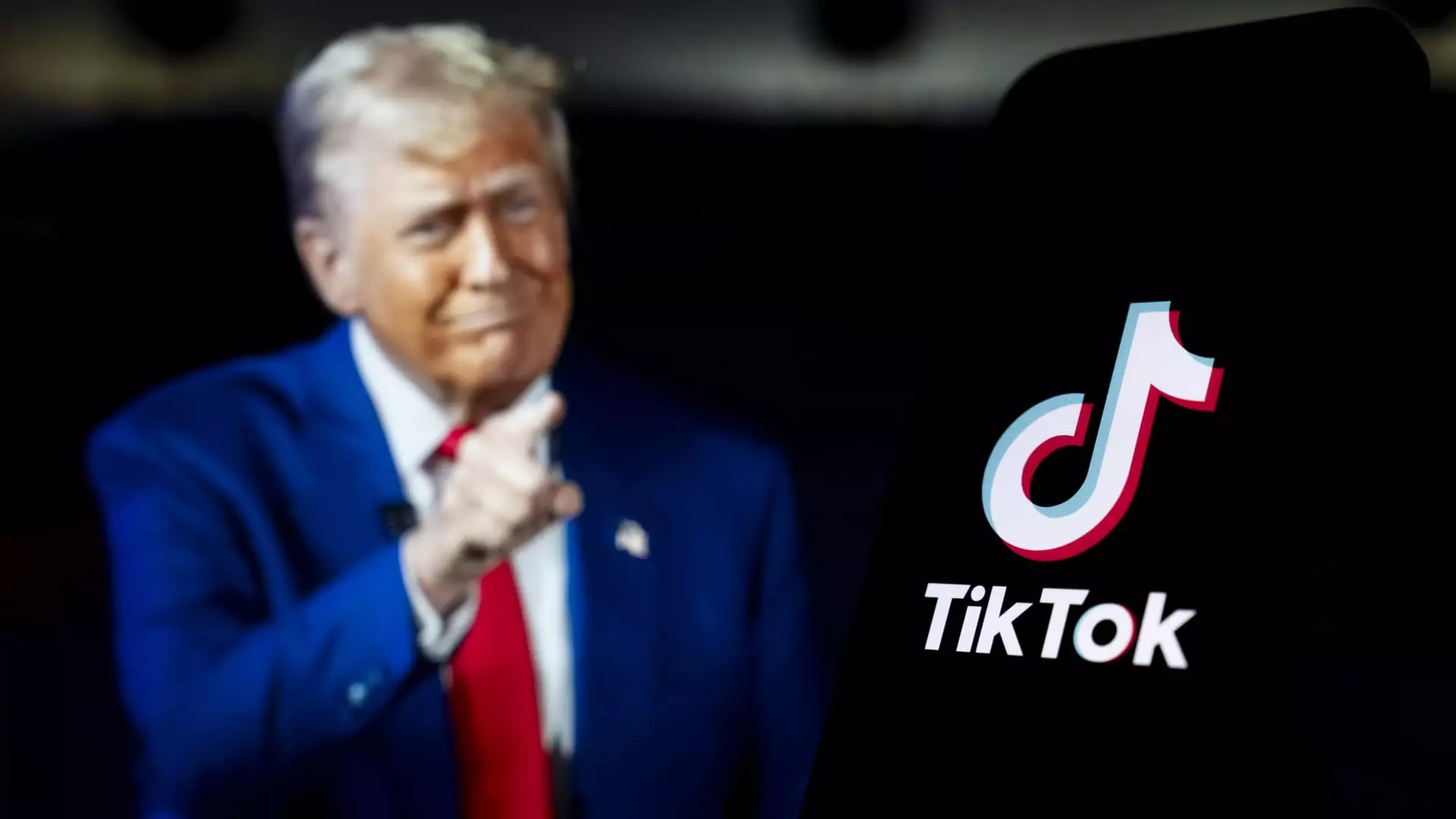Recently, TikTok has demonstrated an impressive recovery in its user traffic, achieving nearly the same levels as before a temporary shutdown. This resurgence follows a steep decline of 85% in usage when the app was briefly taken offline, a scenario monitored closely by Cloudflare Radar. David Belson, Cloudflare’s head of data insight, indicated that TikTok-related DNS traffic is now about 10% less than what it was prior to the service interruption. This quick rebound signifies not only the platform’s resilience but also its importance in the digital landscape. For a platform that has become nearly synonymous with short-form content, the drop in traffic served as a crucial wake-up call for its users and creators alike.
The shutdown stemmed from a legal conflict following a Supreme Court ruling that upheld a controversial law requiring ByteDance, TikTok’s parent company based in China, to either sell its shares or face an effective ban in the U.S. The removal of TikTok from Apple and Google’s app stores sent shockwaves through its vast user base, which includes millions of content creators and viewers across the nation. This unsettling announcement raised grave concerns about the platform’s future, prompting users to consider alternatives.
Despite being offline for approximately 14 hours, TikTok managed to retain the majority of its users. This is a testament to the strong connection creators and audiences have built within the app. Some creators expressed a pragmatic acceptance of the app’s uncertain future, exemplified by Dylan Lemay, who began diversifying his presence across other platforms as soon as the initial threats of a ban emerged in 2020.
Interestingly, during the period leading up to and following the shutdown, traffic on TikTok alternatives spiked, particularly for platforms like RedNote (Xiaohongshu in China). Belson noted that engagement with these competing apps surged as users prepared for the worst. However, it was evident that many creators found the audience engagement levels on alternative platforms fell short of what they experienced with TikTok. For instance, Noah Glenn Carter, a TikTok creator with significant followership, shared his struggles in replicating his audience size on platforms like YouTube and Instagram.
With the uncertainty surrounding TikTok, some creators have found success exploring these alternatives, while others have clung to the community and environment that TikTok has cultivated. This split suggests that while diversification is essential, the essence and unique dynamics of platforms vary widely, affecting creators’ engagement and monetization strategies.
With TikTok’s future increasingly unpredictable, many creators are prioritizing building followings on more stable platforms like YouTube, which provides various monetization options. Lemay’s transition to YouTube and success there has alleviated some anxiety regarding TikTok’s potential demise. Meanwhile, brand partnerships are evolving in response to the shifting landscape. Many brands are opting to pause or adjust their agreements while exploring opportunities across various platforms.
The desire for stability is palpable among creators. For instance, Carter has actively sought to engage with previous brand partners as he navigates uncertain times. Despite some creators maintaining a hopeful outlook—believing TikTok’s potential ban will not materialize—there remains a prevalent sense of caution regarding their content portfolios.
While many creators effortlessly translate their formats across platforms, others are finding it challenging to maintain their identity and audience engagement. True to the sentiment expressed by Michael DiCostanzo, the unique community fostered by TikTok may not be easily replicated elsewhere. The collaborative nature of TikTok and its algorithm-driven content discovery are integral to building a community feel that many short-form video platforms have yet to achieve. For creators, the challenge now lies in balancing their hope for TikTok’s longevity with the practical steps they must take to secure their presence on emergent platforms.
The recent turbulence surrounding TikTok presents a compelling perspective on the dynamics of social media platforms, particularly in how rapidly content can become crisis-laden. As the app regains its footing, creators continue to navigate the tricky waters of building and sustaining audiences amidst fluctuating policies and opportunities. Whether TikTok solidifies its place in the market or succumbs to ongoing pressures, the adaptive nature of its creators reveals an underlying truth: diversifying one’s presence online is not merely a precaution, but an imperative in an ever-evolving digital realm.


Leave a Reply